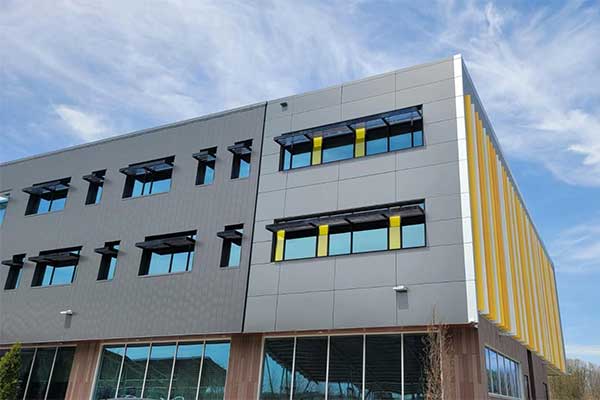Office buildings are typically not energy efficient, and globally they contribute to nearly a third of greenhouse gas emissions from construction to end of life. A new study out of the University of Waterloo analyzes data-driven improvements in Canada’s first zero-carbon, net-positive energy building showing how they play a vital role in that building generating more energy than it consumes.
In the first case study of its kind in Canada, researchers found that the net-positive building used more energy than originally predicted during the first nine months of operation while the operators were still learning about building systems. The paper is published in the journal Energy and Buildings.
In 2019, the building failed to deliver on its promise to make enough solar power for its operations and some for the community. However, through continuous monitoring and implementing improvements, operations staff were able to reduce the building’s energy consumption by approximately 15% without compromising the comfort of people working in the space.
“The case study demonstrates that all buildings can experience operational inefficiencies—including environmentally friendly models,” said Monika Mikhail, a graduate student in the School of Environment, Enterprise and Development and lead researcher on this work. “Implementing data-driven improvements to finetune operations can help sustainably designed buildings achieve their promise to create clean energy for society.”
To address the performance gaps, operations staff upgraded selected equipment like pumps to distribute heat efficiently throughout the building. They also trialed new measures, such as adjusting the heating, ventilation, and air conditioning schedules for improvements. Adopting a mindset of continuous improvement paid off as the energy used to perform those tasks decreased. Now the net-positive building is on track to achieve its target in 2022, producing five percent more clean energy than its consumption and adding it to the Ontario grid.
“We have the technology and tools to adapt to climate change, but they alone are not enough,” said Mikhail. “Leveraging the experience and expertise of building operations professionals and data analysis are critical to ensuring sustainability targets are met.”
In the future, the researchers hope that the findings will inspire other building owners to go beyond producing just their energy quota (net-zero energy) and aim to reach net-positive energy.
“The surplus clean energy can offset the embedded carbon from construction and thus achieve zero-carbon performance, an essential step toward achieving our national carbon targets,” said Paul Parker, professor at the School of Environment, Enterprise and Development. “This effort will require strong collaboration between many stakeholder groups, including designers, operators and funding bodies.”
—
Publication Referenced in the Article:
Monika Mikhail et al, Net-positive office commissioning and performance gap assessment: Empirical insights, Energy and Buildings (2022). DOI: 10.1016/j.enbuild.2022.112717
—
This article has been adapted from source material published by the University of Waterloo.









Comments